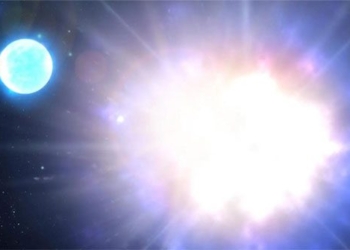NASA has signed a memorandum of understanding with the Japan Aerospace Exploration Agency (JAXA) to participate in the Martian Moon Exploration (MMX) mission.

Simulation of Japan’s MMX spacecraft landing on Phobos, the largest moon of Mars. (Image: JAXA).
The memorandum was signed by NASA Deputy Administrator Pam Melroy and JAXA President Hiroshi Yamakawa at the 38th Space Symposium held in Colorado Springs, Colorado, USA, from April 17 to 20. Under this agreement, NASA will provide the Martian Moon Exploration Gamma-Ray and Neutron Experiment (MEGANE) and the gas sampling device for the MMX mission spacecraft. The mission aims to collect samples from Mars’ moon Phobos and return them to Earth.
“We have great partners at JAXA, and they are leading this ambitious mission to bring back the first samples from the moon Phobos of Mars,” said NASA Administrator Bill Nelson on April 16, prior to signing the agreement.
“With the help of international partners like NASA, JAXA will continue to make every effort towards the successful MMX mission,” JAXA officials stated.
The MMX spacecraft is expected to launch in 2024 and enter orbit around Mars in 2025. The spacecraft will visit both of Mars’ moons—Phobos and Deimos—but will only land on Phobos, which is the larger moon.
MMX will only land on Phobos for a few hours to collect samples. The samples are expected to be returned to Earth in 2029 for scientific study. These will be the first materials collected directly from Phobos.
JAXA has previously successfully collected samples from other celestial bodies in the Solar System. In 2010, the Hayabusa spacecraft returned rocks from the asteroid Itokawa to Earth. The Hayabusa2 probe also successfully brought back samples from the asteroid Ryugu to Earth in 2020.





















































